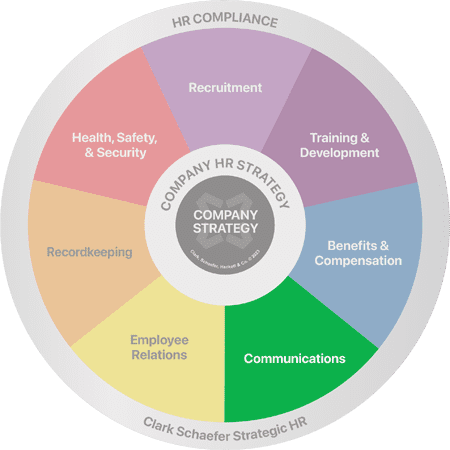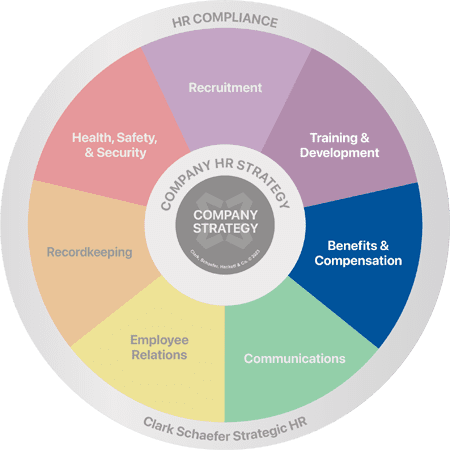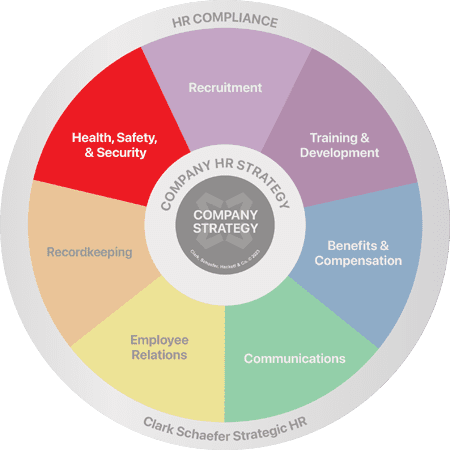What Should I Consider Before Doing a Reduction in Force?
HR Question:
I may need to restructure my workforce as a result of the downturn in business activity. What should I consider from a fairness and legal standpoint?
HR Answer:
Determining the need for a Reduction in Force (RIF) is a challenging decision to make, but it is sometimes necessary to keep the business running in a positive way. According to the Society for Human Resource Management (SHRM), the definition of a RIF “occurs when changing priorities, budgetary constraints, or other business conditions require a company to abolish positions.”
Before moving forward with a RIF, we recommend that you thoroughly consider all of your options. Some states offer assistance to employers that may help them avert layoffs or receive early intervention to help the workforce impacted by a RIF. For example, Ohio Job and Family Services’ Office of Workforce Development offers a Rapid Response (RR) program that is funded by the U.S. Department of Labor. Services may include customized workshops, training, up-skilling, retooling, certifications or skill matching.
If you determine that your organization needs to move forward with a reduction in force, you should use a carefully planned approach. You will need to be aware of and adhere to state and federal regulations to ensure compliance throughout your process. This will help to protect your organization against employment litigation. It is also important to train your management staff on what they can and cannot do in the RIF process. This is a time to go back to the basics when it comes to managing your human resources and protecting your business.
8 Recommended Steps to Follow When Considering a Reduction in Force
1. Select the Employees for the Layoff
It’s important to determine an objective criteria process for your selection process. Consider factors such as criticality of the position to the business, seniority, performance review scores and any corrective action documents that may have been issued. This is the time that accurate and timely employee documentation throughout the year is important as it will play a big part in your selection process.
You will need to remind managers of the importance of using objective criteria in the selection process and not to make decisions based on who they like or dislike. You may also consider having a “no backfill for one year” rule to ensure the RIF is truly necessary and not a way for managers to “clean house.”
Once you have an initial list of employees to be laid off, you should apply steps 2 – 5 below to ensure that you are in compliance with state and federal regulations.
2. Avoid Adverse / Disparate Impact
According to SHRM, adverse or disparate impact refers to “employment practices that appear neutral but have a discriminatory effect on a protected group. Adverse impact may occur in hiring, promotion, training and development, transfer, layoff, and even performance appraisals.” For help in understanding and navigating this, check out SHRM’s toolkit to avoid adverse impact in employment practices.
3. Review Federal and State WARN Regulations
If an organization is contemplating a RIF or a layoff, there are several factors to take into consideration such as reviewing state and federal statutes, including the Worker Adjustment and Retraining Notification Act (WARN). WARN offers protection to workers and even communities by requiring employers to provide a 60-day notice in advance of a plant closing or what they deem as a mass layoff. This Act is only applicable to employers with 100 or more employees.
4. Review ADEA and OWBPA Regulations
You will need to comply with two federal regulations that offer protections based on age: ADEA and OWBPA.
The Age Discrimination in Employment Act (ADEA), protects employees 40 years of age and older from discrimination on the basis of age in hiring, promotion, discharge, compensation, or terms, conditions or privileges of employment.
The Older Workers Benefit Protection Act (OWBPA) is an Act that amends the ADEA to clarify the protections given to older individuals in regard to employee benefit plans, and for other purposes.
5. Determine Severance Packages, Benefits Coverage, and Additional Services (if any)
As you develop severance packages, benefits coverage, and any other services that you will offer, you should review the Employee Retirement Income Security Act (ERISA) to ensure compliance. ERISA is a federal law that sets minimum standards for most voluntarily established retirement and health plans in private industry to provide protection for individuals in these plans.
6. Train Supervisors and Managers
These individuals are your first-line of defense (and many times your biggest legal threat) when it comes to employees’ perception of company policies, procedures, and decisions. Although human resources would always like to be the ones to address employee concerns, your front-line managers and supervisors are doing it on a daily basis whether they want to be or not. They should be properly trained on how to handle employee concerns.
Some suggestions for supervisor/manager training include:
- Basic Discrimination Laws: Be sure supervisors and managers are aware of basic discrimination laws. Assist them with increased communication and employee relation skills so they are able to respectfully support company decisions and communicate with employees regarding their concerns or issues.
- Staying Compliant and Consistent: Ensure managers and supervisors are clearly aware of what they can and cannot do from a legal perspective. Those involved in the employment process should know and document the process used when restructuring or selecting employees for layoff, and then use it – consistently. A clear legally defendable (non-discriminatory) reason when selecting those who will be let go is the most important aspect of restructuring. In addition, managers and supervisors should be guided by human resources to ensure an appropriate message is being delivered when HR isn’t delivering it.
- How to Maintain Good Documentation:We all know that documentation is essential for a good legal defense, but also remember it can hurt as well. Train your staff on what good documentation looks like and what to avoid. Remind them that everything is subject to review in a lawsuit – employee warnings, performance evaluations, and even those simple notes we write down on a sticky note and throw in their file. Be aware of what you are putting down into writing and make sure it is objective and defendable.
7. Prepare for Reduction in Force Meetings
As you prepare for your layoff meetings, have a clear plan of what is going to be communicated, who is responsible for communicating the message, and how the message will be delivered both to those who are being directly impacted and those who will remain. It can be helpful to think through your anticipated frequently asked questions and prepare answers prior to your meetings.
8. Inform Your Workforce of the Layoffs
As you deliver the news of your reduction in force, remember that the golden rule still stands in employment – treat your employees the way you would like to be treated. Think about how you would prefer to be treated during these tough times when decisions are so difficult. Treat your employees with dignity and respect at all times. Provide notice of the layoff if it is reasonable, and provide some type of outplacement if you are able.
Be sure to listen to your employees as well. Employees are more likely to file a claim against employers when they feel like they are ignored or that their concerns are not addressed. Although your message may not always be what they want to hear – allow them to be heard and feel a part of the process.
Remember also, the RIF not only effects the person being released from his/her job, but also the remaining employees. There can be an emotional toll on those who remain, in addition to the impact it may have on their job duties as well. Be prepared to provide the resources and tools necessary to help your staff to stay engaged and do well through this difficult time of transition.
How to Handle Changes to Job Responsibilities
Moving forward, your next consideration is to have a plan about who will absorb each exited person’s job tasks. You should determine if this situation requires a long term solution or if you foresee returning to the prior structure again when the budget allows. Job descriptions for those positions affected by the lay-off will need to be reviewed to reflect changes to the responsibilities and functions of the position. Sometimes you may find the change has actually improved the position making it more efficient.
You may also want to consider a salary review for the positions affected. Since some individuals are now performing the functions of multiple positions, is a pay increase warranted and feasible?
Remember, the job description is based upon the position itself, not the individual performing the job. Make sure to get input from all relevant parties – supervisor and employee – when determining the final role of an impacted position.
In addition, we recommend that you consider cross-training employees on job tasks to be ready for these unforeseen times and to have coverage in the absence of employees when they are out of the office for personal reasons.
To ensure your compliance with all federal and state laws and regulations in the process of a reduction in force, we encourage you to consult with your attorney to review your plans before implementation. Be prepared with a plan and look at the strengths and weaknesses of your team so you are not caught off guard!
If your business is considering a reduction in force, the team at Strategic HR is available to help coach you through the process and decisions that will need to be made. We are here to help you through the tough times – just contact us.






